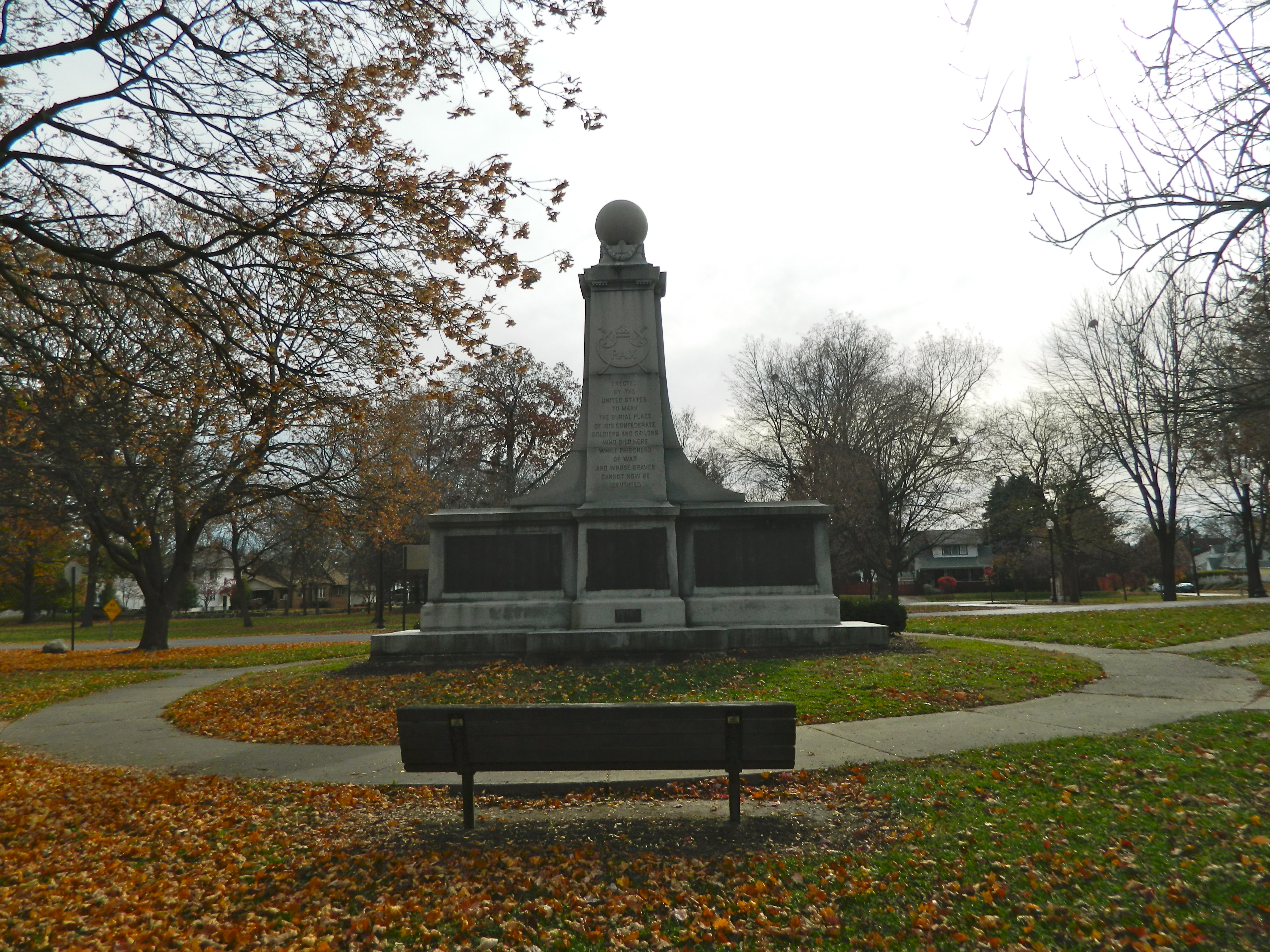Camp Morton
Before the start of the Civil War the ground that Camp Morton came to occupy was the Indiana State Fairgrounds. However, at the start of the war it was turned into a training facility for Indiana troops, and because of the Union’s need to house Confederate POWs it was converted to a temporary prison in 1862, with the first prisoners arriving on February 22, 1862. The prison would stay open and functioning with the exception of a few short months until it closed on June 14, 1865. While Camp Morton had an estimated maximum capacity of only 3,000 prisoners, it at one point held a total of 5,000 prisoners, and an estimated 9,000 prisoners passed through its gates: 1,763 of those men would die while incarcerated there.
While it has been nearly one hundred and fifty years since the end of the American Civil War and the closing of Camp Morton, the Confederate Prisoners who died there and are now buried in Indianapolis have left multiple marks throughout the city. As prisoners were brought into and shipped out of Camp Morton, some of the men died, being buried both at Camp Morton and at Greenlawn Cemetery. After the ending of the war and the closing of Camp Morton, all of the bodies at Camp Morton were exhumed and laid to rest at Greenlawn Cemetery. It was at this point that some bodies were taken home by family members, leaving 1,616 bodies in Indianapolis. Within five years the bodies would once again be exhumed and reburied in another section of Greenlawn Cemetery, and in the process the identity of each body would become a mystery. Even as a monument was placed with the graves to commemorate the dead by listing the name of each body buried in the cemetery.
Twenty years later with the threat of a railroad terminal being put through the cemetery, individuals and groups in Indianapolis petitioned to have the monument moved to a safer location. The local United Daughters of the Confederacy chapter, and the Southern Club of Indianapolis petitioned the United States Congress, receiving a $25,000 appropriation and the signature of then U.S. President Calvin Coolidge. The monument was moved to Garfield Park in Indianapolis, Indiana in 1928.
In 1931 the 1,616 remains would once again be exhumed, gathered into ten large boxes and reburied at Crown Hill Cemetery when Greenlawn closed permanently. Through this process each prisoner was moved at least twice, some three times. The individual identity of each man was lost in the process, becoming mere remains that belonged to a name on a list. When moved to Crown Hill, each set of remains were not placed wholly in one box, meaning that one man’s remains may be scattered through multiple boxes, and the mass grave (ten separate boxes) was marked with a small monument that noted the POWs as “Unknown.” It was the “unknown” that drove individuals to properly mark this gravesite years later.

The image above is of the monument and markers that now stand at Crown Hill Cemetery in Indianapolis, Indiana.
Reasons for properly marking the gravesite of these POWs are straightforward: the common dignity of having their names over their graves; if they would have lived they would have been considered United States citizens and had proper burial rites; recognizing their bravery, perseverance, and loyalty to a cause. These are the reasons why individuals have felt this mass grave should be properly marked. It should be noted, that while there were individuals who felt the graves needed properly marked, there were also individuals who felt it should not have been done. After a very long process, on October 3, 1993, a monument was placed above each of the ten boxes, which gave the name and information of every man. The monument was unveiled along with a rededication of the site with full military rites.

Pictured above is the monument that once stood at Green Lawn Cemetery, but now stands at Garfield Park in Indianapolis, Indiana.